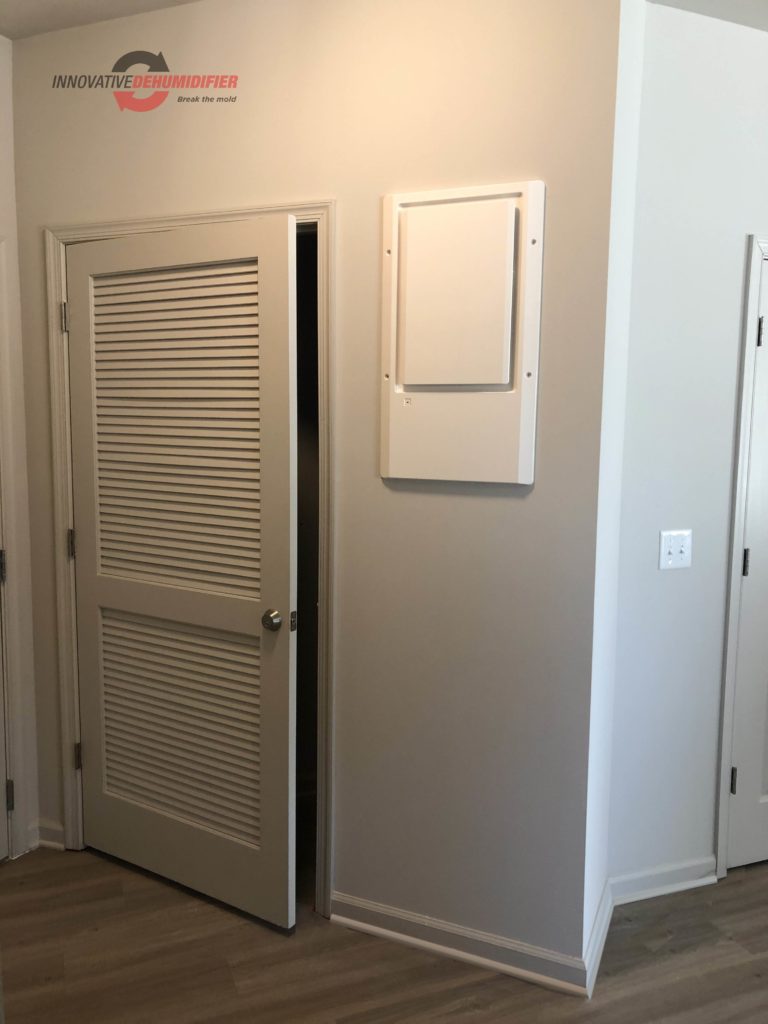Humidity Caused by Everyday Activities Must Have an Escape Route
Although our homes should be our sanctuaries, when it comes to apartment living, the problem of mold can often turn our homes into a headache. We create indoor moisture throughout the day simply by living in an enclosed space. Activities like washing dishes and laundry, cooking, showering, and cleaning all create and leave moisture in the air. And when a space remains chronically moist, mold thrives.
About 25 percent of people exposed to mold find they have an allergic reaction to it and asthmatics exposed to mold have a much higher rate of becoming seriously ill. Several mold-related lawsuits have been filed across the country, and expensive payouts have been awarded to tenants for illnesses suffered from exposure to mold. Mold remediation can be quite costly, so for both tenants and landlords, keeping mold at bay in apartment living has become a serious issue.
A Multitude of Causes

What causes mold in apartments? Excess moisture can originate from almost anywhere, and that’s what gives mold its start. However, growth happens when the high relative humidity (the presence of excess moisture in the air) in an apartment stays consistently at or above 60%. When a room starts to smell musty, mold has become a problem. In an ideal situation, tenants would inform the landlord of the concern immediately so damage can be mitigated, but that often doesn’t happen.
In climates where humidity stays high, understanding that high relative humidity leads to condensation is key. Condensation occurs when moisture in the air turns into water on a cool surface. The surface temperature at which this occurs is called the dew point. The dew point—and thus mold—can be controlled by properly managing room temperature and relative humidity.
Mold needs nourishment and the right conditions to live. Without a food source, the appropriate temperature, oxygen, and adequate moisture, mold will be killed off. Blasting the AC continually can help an HVAC system reduce moisture in the air thus eradicating mold, but at what cost? There is no guarantee it will dehumidify regardless of how low the thermostat is set. And, overusing your HVAC to reduce humidity will result in wasted energy, higher electric bills, shorter life spans of the HVAC unit, and an overchilled home. But is there a better way to prevent mold in an apartment while keeping the space comfortable? Yes, there is!
Taking Action Against Mold
Whole-Home dehumidifiers can effectively remove moisture from an entire home with a noise level just above that of a kitchen refrigerator, but how effectively do they work in an apartment? If installed in the wrong location, there may be tenant complaints about heat displacement. These units are ducted into the HVAC system and only work when the HVAC is running. Since HVAC systems run efficiently in short cycles (turning on just to meet the temperature settings, then turning off again), whole-home dehumidifiers don’t run continually and can be as inefficient at controlling humidity as using an HVAC system alone.
Portable dehumidifiers, while less costly up front, are also less energy efficient and can quickly run up a tenant’s electric bill. They are noisy and can pose a safety hazard if not used properly. This option also requires tenants to manually empty the tank when full, which is messy, inconvenient, easily forgotten, and adds an injury risk for tenants to slip on wet floors in the process. Relying on tenants to maintain portables makes them a less than ideal permanent solution.
A Sure Winner From Innovative Dehumidifier Systems
One solution specifically designed for eradicating mold in apartments is the award-winning, energy-efficient IN Wall/ON Wall IW25-4 dehumidifier by Innovative Dehumidifier Systems. The IW25-4 puts apartment humidity control directly in the hands of landlords and property owners. Created to provide moisture removal daily, the built-in dehumidifier system includes a tamper-proof cover that can only be removed using a special tool. The IW25-4 can be quickly installed inside an interior wall between existing studs or hung directly on a wall. It operates independently of the HVAC system to condense and remove moisture in apartments quietly and efficiently. The system uses gravity to drain directly into existing plumbing, and when needed, an optional internal condensate pump (purchased separately) is installed inside the unit to redirect collected condensation.
For landlords and tenants alike, the IW25-4 wins the battle against mold and its causes in apartments.





